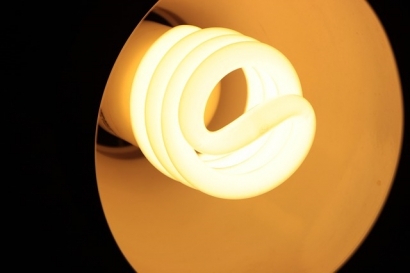
The U.S. Department of Energy (DOE) just announced it has finalized changes to its energy efficiency standards process that will slow down—if not halt altogether—future efforts to make America’s appliances and equipment more efficient. As a result, both the planet and consumers are worse off.
Ignoring feedback from NRDC, other efficiency advocates, and more than 47,000 public comments submitted in opposition to weakening standards, the U.S. Department of Energy (DOE) finalized harmful revisions to its Process Rule. While DOE claims in its announcement that it “heard the American people’s concerns,” the contents of the rule show regard for the concerns of only a select number of manufacturers, not the consumers and businesses who care about strong standards. The Process Rule determines how the agency approaches new or updated energy performance standards for appliances and equipment.
The efficiency standards program is one of the best tools the federal government has in its toolbox to combat the climate crisis. According to the Department of Energy’s own calculations, common sense efficiency standards for things like our refrigerators, water heaters, and air conditioners have already helped avoid emissions of 3 billion tons of carbon dioxide pollution, equivalent to the annual emissions from 631 million cars—which equates to all the cars in the United States, China, Brazil, and France combined.
The program has historically enjoyed bipartisan support and has long been a source of carbon, energy, and cost savings for consumers. Since President Reagan established the program in 1987, standards have saved American consumers and businesses around $2 trillion on their utility bills, a savings of around $500 per household, per year. Steady progress on these national efficiency standards has resulted in better refrigerators, clothes washers, and many other common household appliances and equipment used in businesses. But progress is far from tapped out: the Appliance Standards Awareness Project found that there is another $1 trillion of savings potential, just from updating existing standards.
Unfortunately, the changes finalized recently will make those new savings much more difficult—if not impossible—to achieve. DOE had already undercut the benefits of this program in recent years by missing a plethora of legal deadlines for reviewing and updating standards and test procedures. Its new Process Rule goes even further, putting one of the most successful policies to fight climate change in a straitjacket. The updated Process Rule includes, among other things, the following changes:
DOE claims that the revisions to the Process Rule will streamline the way it sets standards and increase transparency—but the process it outlines seems to be anything but transparent. DOE is adding steps to the already-complex standards development, including an early evaluation of whether a standard is warranted (based primarily on public feedback), and an analysis of whether a standard could meet a subjective savings threshold (discussed more below). It is unclear whether it is even feasible to complete this extensive process within the legally required time frame. Given that DOE has already illegally ignored 21 deadlines to update current standards, with still others pending, the outlook for progress under this new protocol is grim. Furthermore, the rule is now legally binding in all instances, which limits DOE’s flexibility and opens the door to lawsuits that will further slow progress.
Under this Process Rule, before DOE can even start on this lengthy process, a prospective new or updated standard must first meet the arbitrary threshold of either 0.3 quads of site energy savings over 30 years, or a 10 percent improvement in efficiency over existing standards. The last time DOE tried something like this, we sued—and the court agreed with us in NRDC v. Herrington. If this threshold is applied, about 40 percent of standards on the books would not have been completed. While DOE notes that those 40 percent of standards account for “just” 4 percent of total energy savings, remember that we’re talking about huge numbers here. Had that 4 percent of savings not occurred, consumers and businesses would have paid $80 billion more on their utility bills. This inappropriate savings threshold will mean higher bills and more carbon pollution.
No single threshold is adequate to the unique characteristics and energy usage patterns of every product within the 60 categories of appliances, electronics, and equipment covered by the program. Furthermore, the decision of whether or not to set a standard also has historically been focused on the standard’s cost effectiveness. In other words, the energy savings from updating a standard has to outweigh the additional costs from implementing it. Under this new, arbitrary threshold, even standards that add no cost to a product could not be pursued if they do not meet the energy savings or efficiency threshold. This simply makes no sense.
The Process Rule's new testing protocol is equivalent to letting students write their own exams, as my colleague Joe Vukovich notes. To maintain the integrity of the efficiency standard, every product must be tested to measure its energy use. Now DOE has made it standard practice for the industry to write its own tests and perform them with little, if any, modification from DOE. While we have no problem with using industry tests as a starting point, DOE should maintain the final say. If industry gets to write the tests, there’s a lot more opportunity for gaming or developing a procedure that inflates the results.
The changes aren’t just mere procedural modifications: they are designed to halt progress in the energy efficiency standards process, which has worked so well that it's saved households and businesses $2 trillion on their utility bills over the past three decades. Instead, this new policy constitutes another attack on energy efficiency from the Trump administration's DOE, the same agency which has also launched a costly and unpopular rollback of light bulb standards.
We can't afford to lose momentum now on decades of energy efficiency progress. We will not let these Process Rule changes stand.
Reprinted with Permission from NRDC

